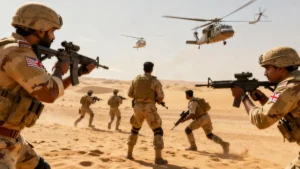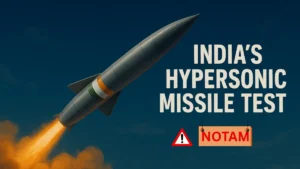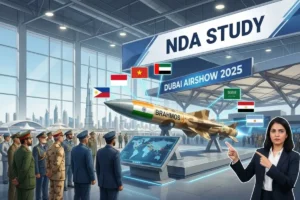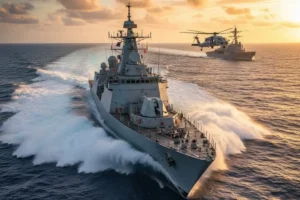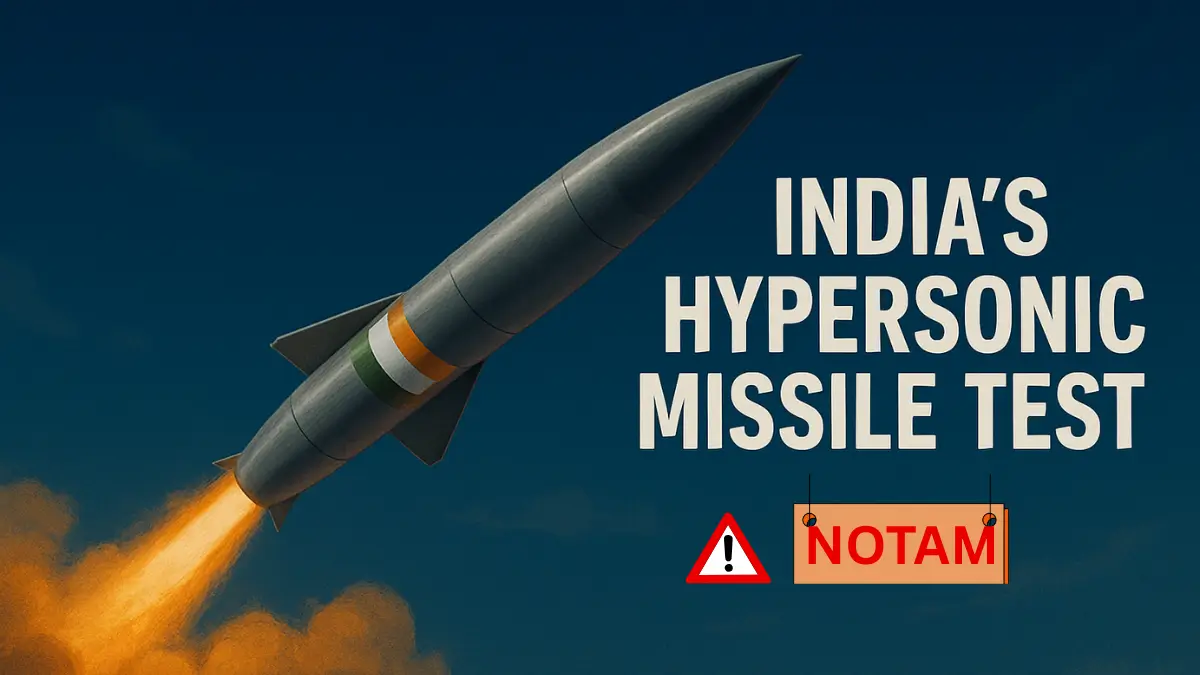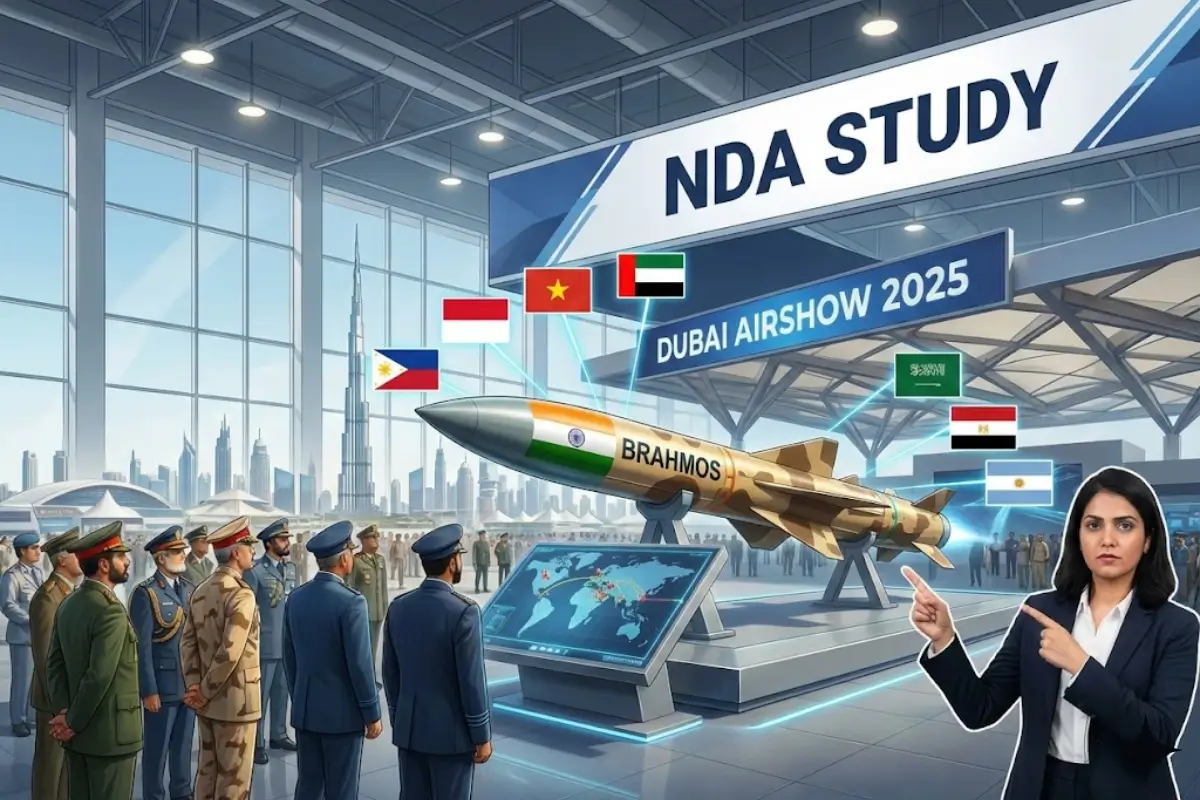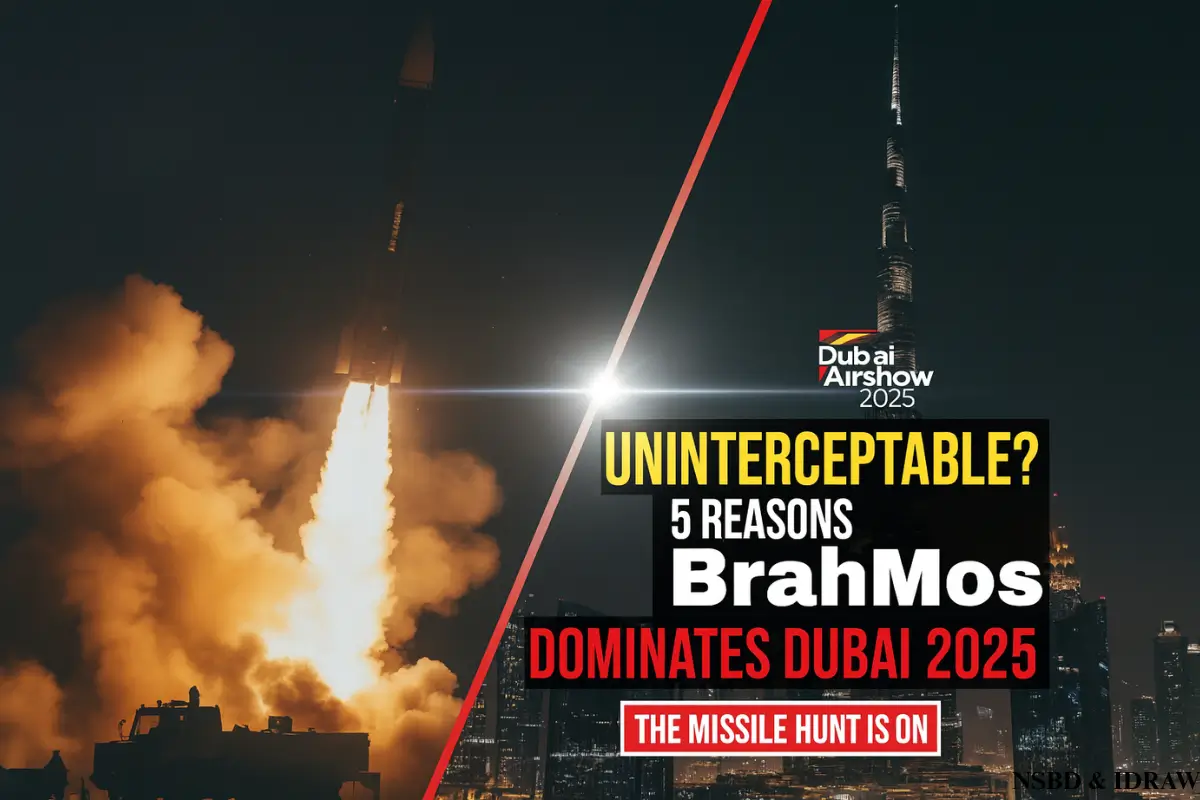India just made a procurement decision that China definitely noticed. On November 18, 2025, the Indian Army signed a contract for 18 BvS10 Sindhu vehicles. Sounds routine? It’s not. This single decision signals something massive: India has identified its critical weakness in border warfare—mobility in impossible terrain—and is fixing it with Swedish technology manufactured locally in Gujarat.
But here’s what’s shocking: Most defense analysts got this completely wrong.
Everyone assumed India would choose an indigenous vehicle or go without. Instead, India played chess. It chose a combat-proven Swedish platform, transferred technology to Indian engineers, and built local manufacturing capacity simultaneously. In this article, we break down 10 reasons why this acquisition changes EVERYTHING for India’s military strategy—and why competitors should be concerned. Get ready. This will shift how you understand border defence.
#1: 🏔️ OPERATES WHERE EVERYTHING ELSE BREAKS—18,000+ FEET ALTITUDE MASTERY
Siachen Glacier sits at 19,000 feet. Oxygen levels = 50% of sea level. Temperatures drop to -60°C. This is Earth’s highest military battleground.
India’s current vehicle fleet? Mostly breaks down or can’t operate reliably above 12,000 feet.
Why BvS10 Sindhu Dominates:
The Sindhu was officially tested and certified to operate at 18,000+ feet—the highest altitude for ANY tracked ATV currently in global military service.
How it achieves this:
The Cummins turbocharged diesel engine maintains full power output where conventional engines lose 30-40% capacity. The articulated twin-cabin design distributes weight perfectly on thin-air slopes where conventional vehicles would tip.
Real Consequence:
Soldiers previously needed:
- ❌ 20-30 human porters (dangerous in extreme cold)
- ❌ Helicopter support (₹1-2 lakh per hour, weather-dependent)
- ❌ Multiple supply runs (logistics nightmare)
Now? ✅ One BvS10 Sindhu replaces 20 porters + multiple helicopter missions.
Supply logistics that took 1 week now take 2-3 days. Tactical responsiveness jumps 400%.
Why This Matters:
In extreme altitude warfare, logistics = victory. The army that moves supplies faster wins endurance battles.
#2: 🌊 AMPHIBIOUS BEAST—SWIMS, FLOATS, CROSSES IMPOSSIBLE WATER ZONES
90% of military vehicles = land-only. BvS10 Sindhu? Fully amphibious. It swims, floats, navigates through water at 0-2 meter depths.
Northeast India Operations:
- Monsoon floods that trap conventional vehicles? BvS10 crosses through them
- Marshy terrain in Assam/Manipur? Passable now
- River crossings without bridge infrastructure? Handled easily

Coastal Deployment:
- Coastal area rapid response? BvS10 can operate in shallow marine zones
- Amphibious assault support? Vehicle-mounted delivery possible
Bangladesh Border:
- Flooded border regions during monsoon? BvS10 maintains operations
- Quick response to infiltration through water zones? Now possible
Real Scenario That Changed:
Previously, a report of infiltration near a flooded river meant:
- Wait for water to recede
- Or call helicopter
- Or assume infiltrators escape
Now? BvS10 crosses immediately, cuts off escape routes, deploys forces directly.
Most militaries focus on dry-land vehicles. India’s geography demands amphibious capability as core feature, not afterthought. BvS10 Sindhu fixes this gap.
#3: 🔧 ARTICULATED DESIGN = IMPOSSIBLE FLEXIBILITY COMPETITORS CAN’T MATCH
BvS10 Sindhu features two connected cabins that flex independently—like a snake moving across rocks.
What This Actually Means:
On rocky, steep mountain terrain:
- Rear cabin tilts 40° independently
- Front cabin maintains contact
- Vehicle doesn’t break in half (conventional vehicles fail here)
On ice-covered slopes:
- Each tracked section finds independent grip
- No slip-backs or tipping
- Continuous forward progress
On muddy terrain:
- Articulation distributes weight
- Prevents chassis breakdown
- Maintains operational integrity
On snow:
- Twin-cabin flex prevents nose-diving
- Rear section maintains traction
- Extreme terrain becomes passable
Rigid-frame vehicles (traditional design) = fail when terrain demands flexibility. India’s previous vehicles suffered from this limitation during border operations. Terrain previously classified as “impassable” becomes “routine”. That’s tactical space expansion—more territory under operational control.
#4: 🌍 COMBAT-PROVEN GLOBALLY—8+ NATIONS USE IT, UKRAINE VALIDATES IT
BvS10 isn’t experimental. It’s operational in:
✅ Sweden (original operator, 20+ years perfection)
✅ France, Netherlands, Austria (NATO validation)
✅ United Kingdom (Allied operator)
✅ Ukraine (actively used in real warfare vs. Russia)
✅ Germany (recently expanded orders)
✅ USA (selected for Cold Weather All-Terrain Vehicle program)
Why Ukraine Matters:
Ukraine uses BvS10 in actual combat—not exercises, actual shooting war against Russian forces. Real-world conditions that matter:
- ✅ Performs in mud, snow, destroyed infrastructure
- ✅ Survives hostile terrain + enemy fire
- ✅ Maintains logistics in chaotic conditions
- ✅ Reliability validated in extremis
Sweden tested it → NATO approved it → Ukraine battle-proved it → India adopted it
That’s zero-risk acquisition of proven capability.
Every military wants equipment that’s “combat-tested.” BvS10 Sindhu isn’t tested in exercises—it’s tested in real war. That’s the highest validation possible.
#5: ⚡ FASTER THAN COMPETITORS—70 KM/H ROADS, 40-50 KM/H OFF-ROAD
The Speed Advantage:
- Road speed: 70 km/h (matches Humvee)
- Off-road speed: 40-50 km/h across EXTREMELY rough terrain
- Range: 500 km without refueling
First-response capability decides conflicts. A vehicle moving 40 km/h through harsh terrain vs. competitor managing 15 km/h = 180% tactical advantage.
Real Scenario:
Border tension detected at LAC. Indian commander deploys BvS10 team.
- BvS10 arrival: 2 hours to forward position
- Conventional vehicle arrival: 5-6 hours
- Helicopter arrival: 3-4 hours (but weather-dependent)
Those 2-3 hours? Difference between defensive position or tactical edge.
- Rapid response becomes possible
- Contested zones can be reached first
- Prisoner/hostage situations? Faster intervention
- Supply emergencies? Quicker resupply
In military doctrine: “Speed = advantage.” BvS10 Sindhu owns this advantage on India’s harsh terrain.
#6: 🇮🇳 MADE IN INDIA (But Built Right)—Technology Transfer Changes Everything
Yes, it’s Swedish-designed. But it’s manufactured in Gujarat by L&T—Indian engineers, Indian workers, Indian industry.
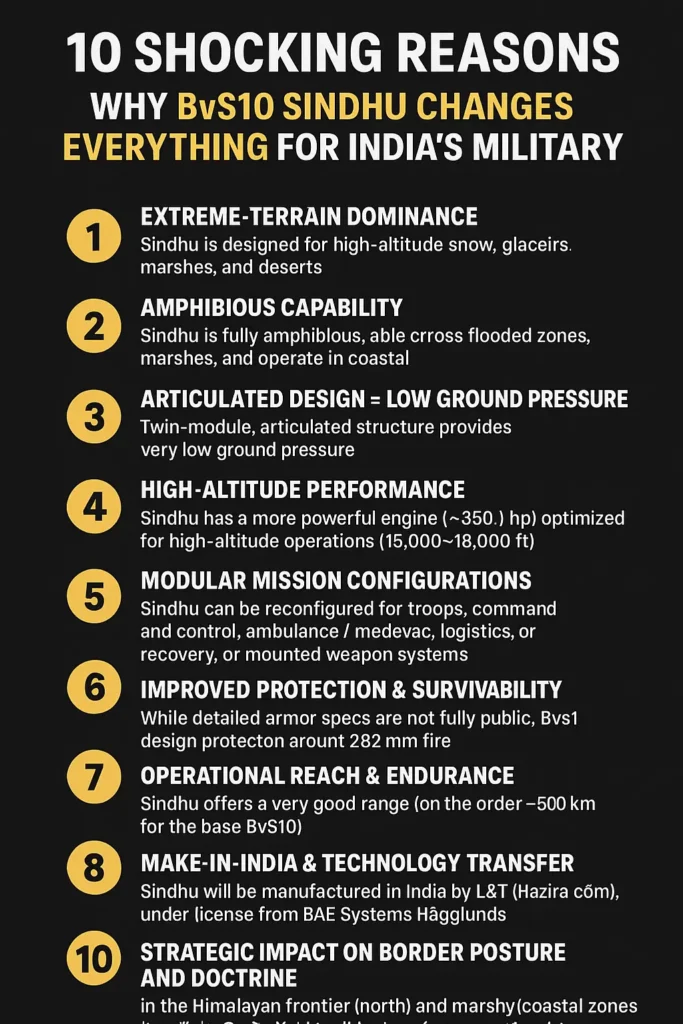
Technology Transfer Impact:
- L&T engineers learn advanced armor design principles
- Indian designers understand articulated vehicle engineering
- Manufacturing expertise in turbocharged engine integration
- Future capability: Indigenous BvS10 variants possible by 2030
The Economics:
₹500+ crore contract flows through Indian industrial supply chain:
- Component manufacturing
- Engineering services
- Maintenance/logistics
- Human skill development
The Strategic Angle:
Short-term: India gets proven vehicle capability
Long-term: India develops indigenous design capacity
Importing vehicles = permanent dependence. Manufacturing locally = building independence. This contract is investment in India’s military-industrial future.
#7: 🌡️ TEMPERATURE RANGE -40°C TO +45°C—WORKS FROM SIACHEN TO RAJASTHAN
BvS10 Sindhu operates across India’s complete temperature spectrum:
- Siachen winter: -40°C fully operational (crew uses heated systems for -60°C)
- Ladakh harsh season: -40°C without issue
- Desert summer: +45°C without overheating
- Monsoon humidity: Tropical conditions fully handled
Why This Matters:
Different army sectors = different climates. One vehicle works everywhere.
Cost Efficiency Impact:
Instead of maintaining:
- ❌ Arctic-specific vehicles
- ❌ Desert-specific vehicles
- ❌ Tropical-specific vehicles
India maintains: ✅ One BvS10 platform for all zones
Logistics simplification:
- Standardized spare parts
- Unified crew training
- Single maintenance protocol
- Lower life-cycle costs
Mobility capability available across all geographical zones simultaneously. That’s national security coverage.
#8: 🎯 MODULAR DESIGN—ONE VEHICLE, SIX MISSION CONFIGURATIONS
Same BvS10 Sindhu platform becomes:
| Configuration | Mission | Crew | Payload |
|---|---|---|---|
| Troop Transport | Soldier deployment | 6-8 | Combat gear |
| Command Post | Mobile HQ | 4-5 | Comms array |
| Medical | Casualty evacuation | 2-4 | Stretchers |
| Gun Platform | Fire support | 3-4 | Weapons mounted |
| Logistics | Supply transport | 2-3 | 5-ton cargo |
| Recovery | Vehicle recovery | 3-4 | Towing gear |
Why Competitors Can’t Match This:
Most vehicles specialize. BvS10 does six things equally well.
Operational Flexibility:
Commander needs troop transport? ✅ Use base configuration
Supply shortage develops? ✅ Reconfigure for logistics
Casualty evacuation needed? ✅ Switch to medical
Same vehicles, different missions, maximum flexibility.
18 BvS10 Sindhu = functional equivalent of 40-50 specialized vehicles
That’s 2-3x better resource utilization.
Defence budgets are limited. Vehicles that do multiple missions = maximum tactical value per rupee spent.
#9: 🛡️ PROVEN AGAINST WORST CONDITIONS
BvS10 has survived:
- Swedish Arctic: -50°C conditions for 20+ years
- NATO exercises: Extreme testing in multiple climate zones
- Ukraine war: Actual combat in mud, snow, destroyed infrastructure
- Indian trials: Official 18,000+ feet altitude tests
What This Proves:
When a vehicle survives Swedish military standards AND NATO validation AND Ukrainian war conditions AND Indian extreme altitude testing = it’s genuinely bulletproof (metaphorically).
No Vehicle Ever Gets Tested This Comprehensively:
Most vehicles tested by:
- Manufacturers (biased)
- One military (limited conditions)
BvS10 tested by:
- ✅ Sweden (Arctic experts)
- ✅ NATO (multiple standards)
- ✅ Ukraine (actual combat)
- ✅ India (extreme altitude)
Equipment confidence comes from proven performance. BvS10 Sindhu has the global proof record that matters.
Related Articles Worth Exploring:
Why 7 Countries Seek BrahMos at Dubai Airshow 2025 After Operation Sindoor
Tejas Fighter Jet Crashes at Dubai Air Show 2025: No official …
Colombia Fighter Jet Deal: €3.1B Gripen-E Contract Exposed
10 Reasons Why Exercise Malabar 2025 Is Breaking All Records (Fact #7 Will Shock You)
7 Most EXPLOSIVE India-Vietnam Defence Partnership Breakthroughs VINBAX 2025 Revealed
#10: 🚨 STRATEGIC MESSAGE TO CHINA—”WE’RE SERIOUS NOW”
When India announces a major military procurement, it’s a message. BvS10 Sindhu announcement specifically targets:
What This Signals:
- ✅ “We’ve identified high-altitude mobility weakness”
- ✅ “We’ve invested ₹500+ crore to fix it”
- ✅ “We won’t wait for perfect indigenous options”
- ✅ “We can move forces to contested zones faster now”
- ✅ “We’re serious about border control”
Why November 2025 Timing Matters:
Global tensions escalating. India’s message: “We’re not waiting. We’re moving NOW. We’re ready.”
Military doctrine: “Possess capability + publicize it = deter aggression”
BvS10 Sindhu procurement IS exactly this strategy.
How China Interprets This:
Chinese defense analysts recognize:
- High-altitude mobility = critical LAC advantage
- BvS10 capability = Siachen operations now viable
- Combat-proven platform = India gets immediate capability
- Ambitious timeline = India prioritizing border readiness
The Psychological Impact:
Without firing a shot, India has signaled: “We’re upgrading our tactical capability. You should know about it.” Geopolitical power includes signals about capability and commitment. This procurement is India’s statement of intent.
🔥 SHOCKING STATS COMPARISON (Why BvS10 Dominates)
| Metric | BvS10 Sindhu | Conventional ATV | Advantage Factor |
|---|---|---|---|
| Altitude | 18,000+ ft | 12,000 ft | 50% higher ⭐ |
| Amphibious | Yes ✓ | No ✗ | 100% advantage ⭐ |
| Temperature | -40 to +45°C | -20 to +40°C | 2x wider ⭐ |
| Off-road Speed | 40-50 km/h | 15-20 km/h | 200% faster ⭐ |
| Range | 500 km | 250-300 km | 67% longer ⭐ |
| Combat Tested | Ukraine war ✓ | Exercises mostly | Real-world proven ⭐ |
| Nations Using | 8+ | Limited | Clear leader ⭐ |
| Modularity | 6 configurations | 1-2 configs | 300% flexible ⭐ |
FAQs | Why BvS10 Sindhu Changes Everything for India’s Military
1. When will soldiers actually get these vehicles in the field?
First deliveries expected November 2027, with full fleet operational by March 2028. That’s 2 years away—but those 2 years allow for production perfection and crew training.
2. Can BvS10 Sindhu defend India against China’s border vehicles?
BvS10 Sindhu doesn’t need to “defend.” It’s a mobility platform. By moving forces faster to disputed zones, it gives India tactical advantage—defending contested territory through superior positioning and response speed.
3. Will India order more beyond 18 vehicles?
Almost certainly yes. The 18-vehicle initial order is proof-of-concept. Success typically leads to expanded procurement. Industry estimates suggest 50-100+ additional vehicles by 2035.
4. Why cost ₹500+ crore when India could develop indigenous alternatives cheaper?
Two reasons:
Time: Soldiers need capability NOW, not in 5 years
Risk: Proven platform < unproven indigenous design. Strategic security doesn’t accept unnecessary risk.
5. Could this technology be used to build future Indian-designed vehicles?
Absolutely. Technology transfer is explicit in the contract. By 2030, India could design BvS10 variants entirely domestically—turning this procurement into long-term capability building.
6. Will BvS10 be deployed immediately or kept in reserves?
Immediate operational deployment. These vehicles will be stationed in Ladakh, Siachen, and Northeast frontiers within 3-6 months of delivery.
7. Is this purchase influenced by recent China-India tensions?
Yes, partly. But it’s also strategic planning. High-altitude mobility has been a recognized gap for years. Current geopolitical situation accelerated the procurement decision.
💯 THE PROFOUND TRUTH
The BvS10 Sindhu acquisition represents far more than a vehicle purchase.
It’s India declaring:
✅ Border security is national priority—₹500+ crore investment proves it
✅ Military modernization is happening—advanced platforms arriving now
✅ Strategic weaknesses are being fixed—high-altitude mobility enhanced
✅ Make in India works in defense—manufacturing capability proven
✅ We’re ready to compete globally—against China, Pakistan, and international standards
By 2028, when the first BvS10 Sindhu deploys to Siachen Glacier, Indian soldiers will have equipment operating where previously seemed impossible.
🎯 SHARE THIS IF YOU BELIEVE:
✅ National security matters
✅ Defense modernization is important
✅ India should dominate its borders
✅ Strategic planning beats improvisation
✅ Technology transfer matters for long-term independence

